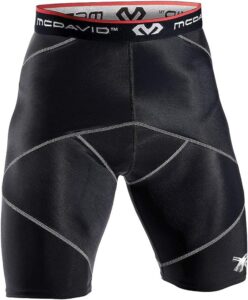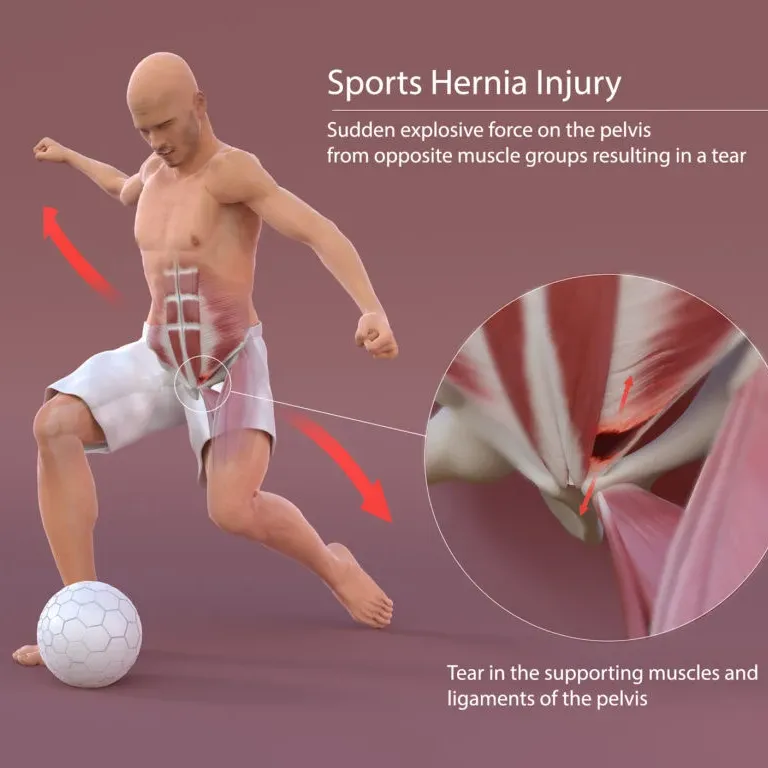This article follows Sports Hernia (Athletic Pubalgia) Part 1, and discusses the non-surgical management of athletic pubalgia with a focus on exercise rehabilitation.
1. Rest and Activity Modification
- Avoid activities that exacerbate the pain, such as running, twisting, or heavy lifting
- Engage in low-impact exercises like swimming or cycling to maintain fitness without stressing the abdomen and groin
2. Pain Management
-
- Shockwave Therapy: can eliminate adhesions in the abdominal and groin myofascial structures and promote healing
- Heat Therapy: Heat can relax tight muscles and prepare them for manual therapy
3. Manual Therapy
- Techniques that we use at BTF like movement specific myofascial release, and chiropractic care can relieve tension in the surrounding muscles and improve pain-free range of motion while correcting joint position
4. Exercise Therapy
-
- A structured rehabilitation program can help strengthen and stabilize the muscles of the core, hips, and pelvis
- Focus areas often include:
- Core stabilization exercises
- Hip adductors and gluteal strengthening
- Lengthening of the hip flexors and/or hamstrings
- Postural correction to reduce strain on the pubic symphysis
- Reformer Pilates
We divide the rehabilitation program into 4 phases. For each phase we have provided an example of an exercise that we would use to achieve the goals of that phase. Keep in mind that the timeline to progress to each new phase is dependent on each individual client and how they are responding to care. This is why having an experienced sports practitioner overseeing your rehab is essential! For each phase, we have also provided a reformer Pilates exercise example. We have found the guided exercises on the Pilates reformer invaluable in helping our clients recover from athletic pubalgia faster and get back to their sports and activities.
Phase 1 (1-2 weeks)
goals – pain control; postural reeducation; lengthening of tight myofascial structures; hip & spine mobilization to improve ROM; core stabilization
90-90 Hip Lift with a Left Pelvic Shift
Reformer 90-90 Hip Lift with Left Pelvic Shift Sequence
Phase 2 (2-4 weeks)
goals – gait training; core stabilization; core strengthening with neutral spine; functional strength training; 2-foot balance training; cardiovascular training
Push Up Plank Knee Hovers with Ball Squeeze
Reformer Quadraped Series
Phase 3 (4-6 weeks)
goals – dynamic core training; 1-foot balance training
Suspension Cord Crunch Sequence
Reformer Skater Series
Phase 4 (6-8 weeks)
goals – cardiovascular training should become sport-specific; more aggressive functional training; plyometric training
Cable Split Squat to Oblique Pull
Reformer Standing Inner Thighs/Pelvic Floor
5. Supportive Devices
 Wearing compression shorts or groin support can provide stability and reduce discomfort during activity.
Wearing compression shorts or groin support can provide stability and reduce discomfort during activity.
6. Gradual Return to Activity
- Once pain subsides, gradually reintroduce activities, focusing on proper technique and avoiding overexertion.
If symptoms persist despite non-surgical treatments, BTF has a referral network of sports medicine specialists in case surgical intervention may be necessary. Remember, early diagnosis and a comprehensive non-surgical treatment plan are the keys to a quick and effective recovery.
If you are dealing with abdominal/groin area pain and need to be evaluated by one of our BTF doctors, please contact us at 310-534-1900 or by email at info@backtofunction.com.
Feel – Recover – Perform Better
References:
Kachingwe AF et al. Proposed Algorithm for the Management of Athletes with Athetic Pubalgia: A Case Series. J of Ortho & Sports Phys Ther. Dec 2008.
Ellsworth, AA et al. Athletic Pubalgia and Associated Rehabilitation. the Intl J of Sports Phys Ther. Nov 2014.



